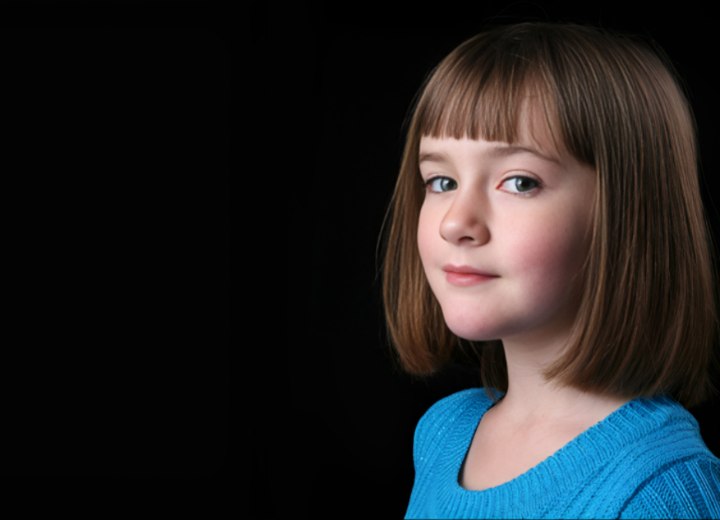Common Sense Tips For Kids' Hair

However, selecting haircuts and styles for kids generally requires some pretty specific considerations. As many parents know, sometimes the biggest challenge of any day is dealing with the child’s hair.
Hair Length and Age:
Growing up with many nieces and nephews of varying ages, it was interesting to see how different parents (even from similar backgrounds) approached the subject of kids’ hair. My sister-in-law kept her sons’ hair as long as possible - in shag cuts (when the hair was curly) or mullets while they were under the age of five, but as soon as they started school, they were taken to the barber shop and given buzz cuts.
However, my sister who had girls, followed similar attitudes and was prone to keep her little girl’s hair uncut – without so much as a trim – which she claimed was meant to keep the hair as curly as possible – until the child was 8 (and could actually brush her own hair properly) at which point she promptly took her and got it cut into a pixie cut.
Neither of these choices in the early years was based on pre-conceived ideas about gender, but rather a desire to preserve what was considered to be “great” features. All of my sister-in-law’s children had beautiful hair - one was even a curly carrot top, and my sister’s primary concern was keeping what she thought of as adorable blonde curls on her cherub-cheeked little girl. However, as the kids got older, more independently active, and their schedules increased, the constant hair care routine became a hassle.
The problem most often complained of in both families was that getting the kids ready to go anywhere took a great deal of time and effort, since the cuts selected for the kids required a LOT of styling time, and at young ages, this was not fun for the parents or kids. As a result, by the time the kids would be able to help care for their hair, it was shorn.
Parents should always keep in mind that at certain ages – typically from toddler to kindergarten – as kids get more active in their play and expand their mobility - they’re often going to have added styling needs. The beautiful two-year-old with the head full of ringlets may turn into a screaming 4-year-old after an afternoon of playing in the yard and a nap when you have to tame the medusa’s nest that her hair has become. Similarly, the little boy whose bowl-cut is adorable and easy to care for at two and three, becomes a headache to keep looking neat when he’s constantly digging in the dirt, crawling through bushes or climbing in the garden.
The key is to be realistic in your expectations of the effort to care for your children's hair while they’re small. At the toddling age, consider going for shorter cuts and styles that are easy to maintain. If your little boy has really thick, lush hair, keep it cropped short while he’s at the age where he’s into everything but you still have to wipe his behind for him.
And when your little girl runs from you every time she sees a brush in your hand and you have to wrestle with the hair to untangle and tame it again, maybe cutting it shorter would help make it easier to manage. (At the very least, consider styles like braids and twists as staples if you just can’t agree to cutting the hair.)
As the parent, you, of course, have every right to decide how your child’s hair should be cut and kept. I just encourage you to think about options that you may not have considered.
If the parents are divided on the issue of how to cut or keep the child’s hair, let the parent who advocates the higher-maintenance option take responsibility for keeping the hair groomed. Either the parent will come to realize the difficulty, or the child’s hair will be groomed by the person who wants a specific look. Either way, the hairstyle problem will be resolved.
Continue reading ...
